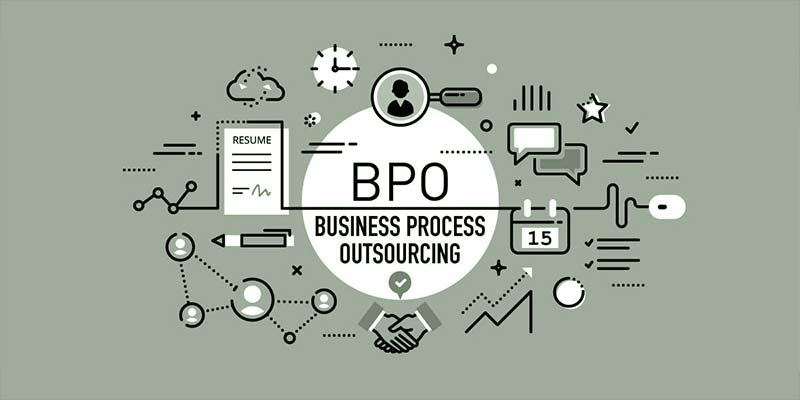Business Process Outsourcing (BPO) Analysis
- Description
- Curriculum

In today’s globalized business environment, organizations are increasingly turning to Business Process Outsourcing (BPO) to streamline operations, reduce costs, and gain access to specialized expertise.
BPO analysis is a critical function that ensures a successful transition and ongoing optimization of outsourced processes. This comprehensive course equips you with the knowledge and skills to become a BPO analysis pro.
We’ll delve into the core concepts of BPO, explore various outsourcing models, and guide you through the entire BPO analysis lifecycle – from process identification to performance monitoring.
Whether you’re a business analyst, project manager, or someone involved in outsourcing decisions, this course empowers you to make informed BPO choices and ensure successful outsourcing outcomes.
Course Objectives:
- Gain a thorough understanding of the BPO industry, its benefits, and potential challenges.
- Explore various BPO models, including onshore, nearshore, and offshore outsourcing.
- Develop skills for identifying business processes suitable for BPO.
- Master the BPO analysis lifecycle, encompassing process mapping, cost analysis, and risk assessment.
- Learn strategies for selecting the right BPO vendor based on capabilities, cost, and cultural fit.
- Understand the importance of developing a comprehensive Service Level Agreement (SLA) for effective BPO management.
- Explore techniques for transition planning, knowledge transfer, and change management during BPO implementation.
- Analyze key performance indicators (KPIs) for monitoring and measuring the success of outsourced processes.
- Develop skills for continuous improvement and optimizing BPO relationships for long-term success.
Course Highlights:
BPO Fundamentals:
- Demystify BPO and its role in optimizing business operations.
- Explore the different types of BPO services, including front-office, back-office, and knowledge-based processes.
- Analyze the benefits of BPO, such as cost reduction, access to talent, and improved efficiency.
- Understand the potential challenges associated with BPO, such as data security, cultural differences, and vendor management.
Outsourcing Models and Considerations:
- Delve into various BPO models, including:
- Onshore outsourcing: Outsourcing to a service provider within the same country.
- Nearshore outsourcing: Outsourcing to a service provider in a geographically close country.
- Offshore outsourcing: Outsourcing to a service provider in a distant country, often with lower labor costs.
- Explore factors to consider when choosing an outsourcing model, such as cost, language, time zone differences, and legal requirements.
The BPO Analysis Lifecycle:
- Master the BPO analysis lifecycle, encompassing:
- Process identification: Selecting processes suitable for outsourcing based on their characteristics and value.
- Process mapping: Visually documenting business processes to identify inefficiencies and opportunities for improvement.
- Cost analysis: Evaluating the cost of in-house operations compared to potential BPO costs.
- Risk assessment: Identifying and mitigating potential risks associated with outsourcing, such as security breaches and vendor performance issues.
Selecting the Right BPO Vendor:
- Learn strategies for selecting the right BPO vendor based on crucial criteria like:
- Capabilities: Assessing the vendor’s experience, expertise, and technological infrastructure.
- Cost: Comparing pricing models and ensuring transparency in costs.
- Cultural fit: Evaluating the vendor’s cultural alignment and ability to understand your business needs.
- References: Checking past client references and performance history.
Service Level Agreements (SLAs):
- Understand the importance of developing a comprehensive Service Level Agreement (SLA) for effective BPO management.
- Learn key components of an SLA, such as service specifications, performance metrics, and service disruption protocols.
Implementation and Change Management:
- Explore techniques for transition planning, knowledge transfer, and change management during BPO implementation.
- Analyze strategies for minimizing disruption and ensuring a smooth transition to outsourced processes.
Performance Monitoring and Optimization:
- Master the use of key performance indicators (KPIs) for monitoring and measuring the success of outsourced processes.
- Learn how to analyze KPI data and identify areas for improvement within the BPO relationship.
- Develop skills for continuous improvement and optimizing BPO relationships for long-term success.
Target Audience:
- Business Analysts, Project Managers, and anyone involved in evaluating and implementing BPO solutions.
- Business leaders and decision-makers considering outsourcing options for their organizations.
- Process owners and team members responsible for the smooth transition and ongoing management of outsourced processes.
- Procurement specialists seeking to develop strong vendor relationships with BPO providers.
- Anyone interested in understanding the complexities of BPO and its role in the modern business landscape.
-
1Nvidia New Technologies Slides
Welcome to your first slider tutorial. This slides will start with a simple introduction. Then, You will open up google cause I"ll show you where you can download the blender software and which version of it will we be using in the entire course period.
Note: The download link is available with the lecture, plus the .pdf file is also included for you to download if you still need help downloading the software.
-
2Engine Target Audience
-
3Quiz: Mobile / Native Apps
-
4Realistic Graphic on UE4
-
5Volta GPU for optimization.
The Tensor Core GPU Architecture designed to Bring AI to Every Industry. Equipped with 640 Tensor Cores, Volta delivers over 100 teraflops per second (TFLOPS) of deep learning performance, over a 5X increase compared to prior generation NVIDIA Pascal architecture.
-
6Deep Learning








